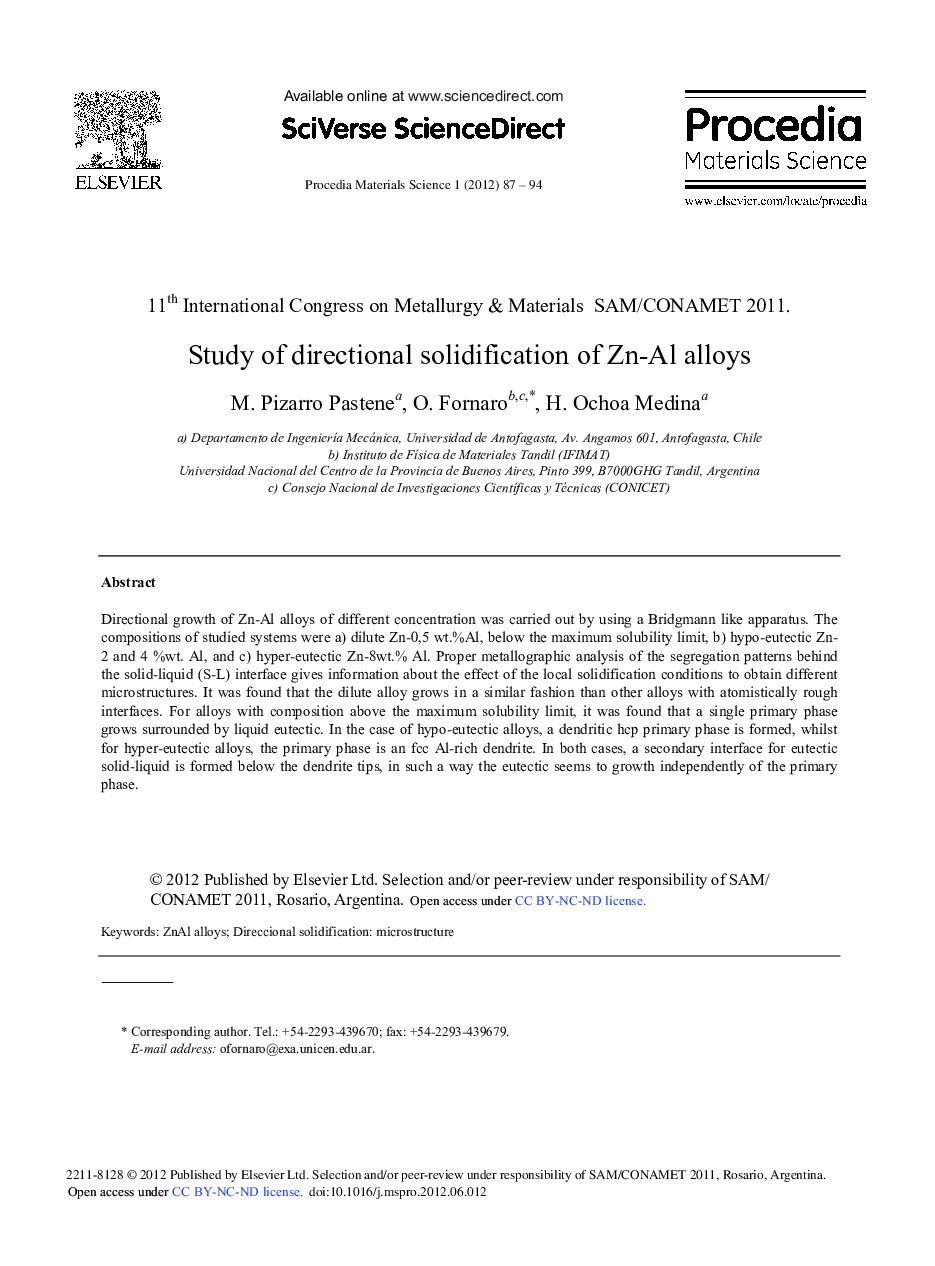| Article ID | Journal | Published Year | Pages | File Type |
|---|---|---|---|---|
| 1634859 | Procedia Materials Science | 2012 | 8 Pages |
Directional growth of Zn-Al alloys of different concentration was carried out by using a Bridgmann like apparatus. The compositions of studied systems were a) dilute Zn-0,5 wt.%Al, below the maximum solubility limit, b) hypo-eutectic Zn- 2 and 4%wt. Al, and c) hyper-eutectic Zn-8 wt.% Al. Proper metallographic analysis of the segregation patterns behind the solid-liquid (S-L) interface gives information about the effect of the local solidification conditions to obtain different microstructures. It was found that the dilute alloy grows in a similar fashion than other alloys with atomistically rough interfaces. For alloys with composition above the maximum solubility limit, it was found that a single primary phase grows surrounded by liquid eutectic. In the case of hypo-eutectic alloys, a dendritic hcp primary phase is formed, whilst for hyper-eutectic alloys, the primary phase is an fcc Al-rich dendrite. In both cases, a secondary interface for eutectic solid-liquid is formed below the dendrite tips, in such a way the eutectic seems to growth independently of the primary phase.
